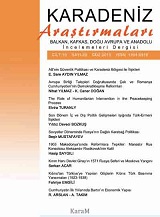Sovyetler Döneminde Rusya’nın Dağlık Karabağ Politikası
Russia’s Nagorno Karabakh Policy in Former Soviet Union
Author(s): Beşir MustafayevSubject(s): Politics / Political Sciences
Published by: Karadeniz Araştırmaları Merkezi
Keywords: Azerbaijan; Dashnaks; Karabakh; Soviets; Russia; Armenia
Summary/Abstract: Taking into consideration the common and mutual interests among the lines Turkey-Georgia-Azerbaijan, Russian-Armenia and the USAEU in the Caucasus, one may easily realize that it is too difficult to establish o long-during peace in this region. There is no another region in the world as the Caucasus that were so deeply affected by the administrative and political changes in the world order. The Nagorno- Karabakh region of Azerbaijan is an important case in terms of both its local geographical features and wider geopolitical aspects of the Caucasus. Nagorno-Karabakh is vital for the Armenians in order to realize the dream of Greater Armenia. The years between 1938 and 1953 are marked in the Soviets as the period of “punishing of the guilty peoples”. Although Muslim peoples of the Caucasus struggled against the Germans and many difficulties durıng the Second World War and contributed to the Soviet victory, the state labelled its own Turkish citizens and other Muslims as “public enemies” and punished just after the war. Accidentally, those identified as “public enemies” in Armenia were only its Muslim citizens. It is clear that the main purpuse of Russia was to make ethnic cleansing in the South Caucasus and to remove also the Muslims living in Armenia. By this way, the question of territorial integrity of Azerbaijan entered permanently the world agenda, without promising for any solution.
Journal: Karadeniz Araştırmaları
- Issue Year: 2013
- Issue No: 39
- Page Range: 53-68
- Page Count: 16
- Language: Turkish

